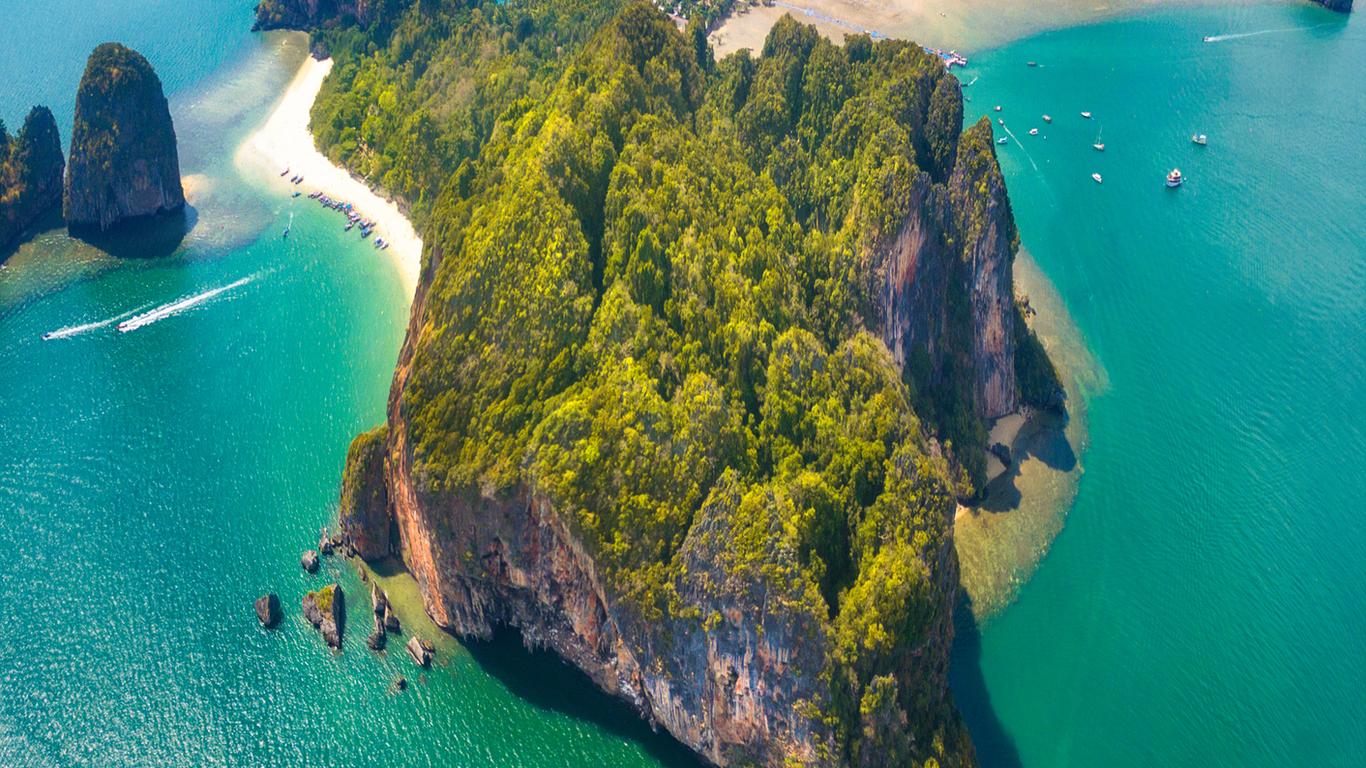Railay Beach is a vision of dazzling white-sand beaches, turquoise water and jungle-covered limestone cliffs. The postcard-perfect resort is perched on a small peninsula and has a laid-back vibe, with lots of beachfront bars and restaurants where you can sip cocktails with your toes in the sand. Sheer limestone cliffs cut off Railay Beach from the mainland and give it an off-the-grid feel.
Things to do in Railay Beach
Enormous limestone cliffs and rock formations make Railay Beach a seventh-heaven for rock climbers. Lessons are a fun introduction to the sport. As you make your way up the cliffs, you can enjoy sweeping views over the sparkling Andaman Sea. There’s a good chance to see monkeys climbing up the cliffsides.
Sugar-white sand and crystalline water make Hat Railay West a prime spot to swim and sunbathe. Luxury resorts dot the beach and give Hat Railay West an upmarket atmosphere, while Hat Railay East is a hub for backpackers and budget travellers. The beach is lined with mangroves and isn’t suitable for swimming. However, it’s a great spot to find low-key bars and restaurants. After a day of rock climbing, refuel with creamy coconut milk curries and spicy papaya salad.
Nearby Hat Tham Phra Nang is another beautiful stretch of sand. It’s set on the south-west tip of the peninsula and features a crescent of soft sand framed by soaring limestone cliffs. A pair of islands rise up from the azure water.
Boat tours are a fun way to explore the coastline around Railay Beach. You can visit hidden sea caves and secret lagoons where you can swim and snorkel with tropical fish. For an authentic experience, book a tour on a traditional longtail boat.
Follow the jungle-covered trail to Sa Phra Nang, a postcard-perfect lagoon hidden beneath steep cliffs. Ropes make it a little easier to navigate the steep and slippery trail. From the clifftop viewpoint, you can enjoy a bird’s eye view of the turquoise lagoon.
Getting around Railay Beach
Railay Beach is compact and easy to get around on foot. The beach is accessible only by boat, with the ride from Ao Nang taking about 15 minutes. Krabi Airport is a 45-minute drive from Ao Nang.





